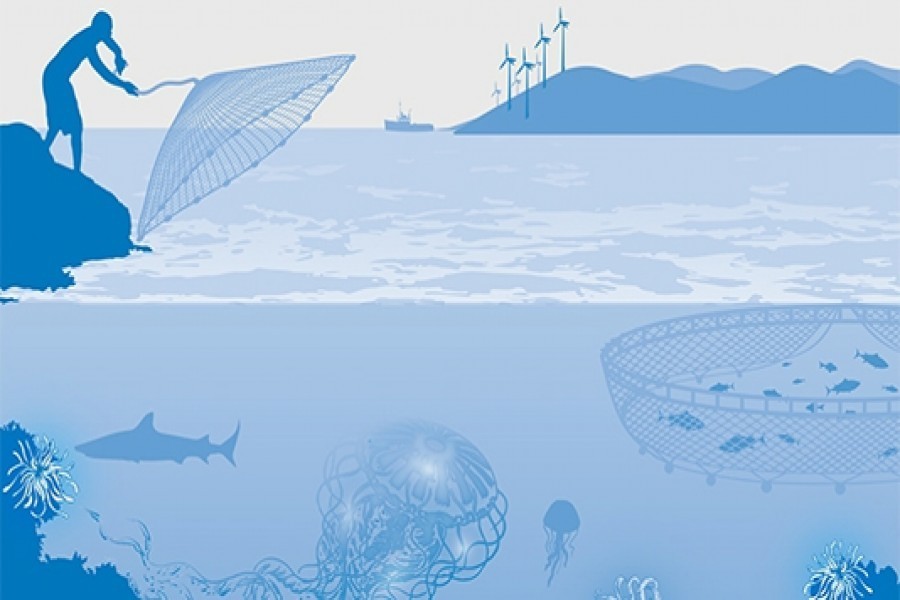With the Finance Minister having unveiled the nation's 48th budget yesterday and as the whole the country mulls over its finer points -- directions and implications, goals and objectives, allocations and other specifics -- one of the subjects that may be up for serious and constructive attention is the issue of `blue economy'. In the simplest of terms, Bangladesh's earnings from activities in the internationally recognised areas of the Bay of Bengal, its coast-line, maritime territory, continental shelf and exclusive economic zone, would stand out for priority attention for an all round development of the `blue economy'. The income is estimated around 3.0 per cent of the total Gross Domestic Product (GDP), which in monetary terms works out to between six and seven billion dollars, by one calculation. As a contributor to the GDP it beckons huge potential -- and that is where its importance lies.
Ever since the subject first came into more serious consideration over the past decade, it has drawn attention of the state in various ways, finding place as a policy objective in the seventh Five Year Plan. The Foreign Office has, admirably, a designated Maritime Affairs Secretary for providing specific leadership on the issue through a Blue Economy Cell in the ministry. Other ministries are coordinated through the Cell; and together they devise strategies. The Coast Guard is another apparatus that has a role to play here. The Bangladesh Parjatan Corporation (BPC), the country's top tourism-provider body, is also involved in the affairs by way of ushering in adventure tourism. It is good to note that an infrastructure is emerging to steer the sector but only too slowly at that.
This paper highlighted through a front-page item a few days back that the tapping of blue economy potentials has not progressed much. There are many obstacles on the way; some cultural, others infrastructural. But there is no doubt that following the best practice methods is the way to go forward. The one important thing that has to be done is an all-inclusive survey of the maritime resources and potentialities. It should be much more elaborate than the one entrusted to a Norwegian firm that mostly looked for energy resources. In fact a total census may be carried out so that all resources, jobs, potentials and risks can be assessed and taken into account towards formulation of a strategy. It has been mentioned that 30 million people are dependent on the seas for their livelihood. The figure may be bigger through the opening of doors to exploring the seas further through a comprehensive survey. Altogether, the endeavour is destined to bring in rich dividends for the whole country.
Finding place in planning documents, setting up of institutions following settlement of disputes with India and Myanmar over rights in the Bay of Bengal through international arbitration, and greater attention of public and private sectors towards the issue will augur well for the future of our blue economy. As the Seventh Five Year Plan mentioned, while sustainable economic growth through sea resources is one singular aim, attention has to be given to 'preserving the health of the sea'. In fact, this is the correct path in matters of ensuring rewarding and sustainable blue economy.


